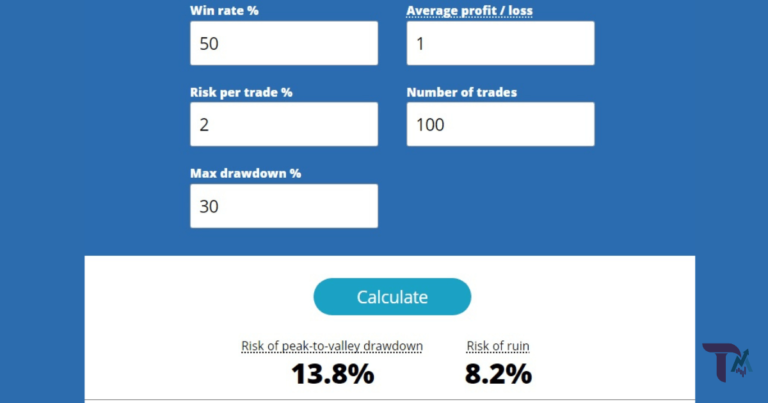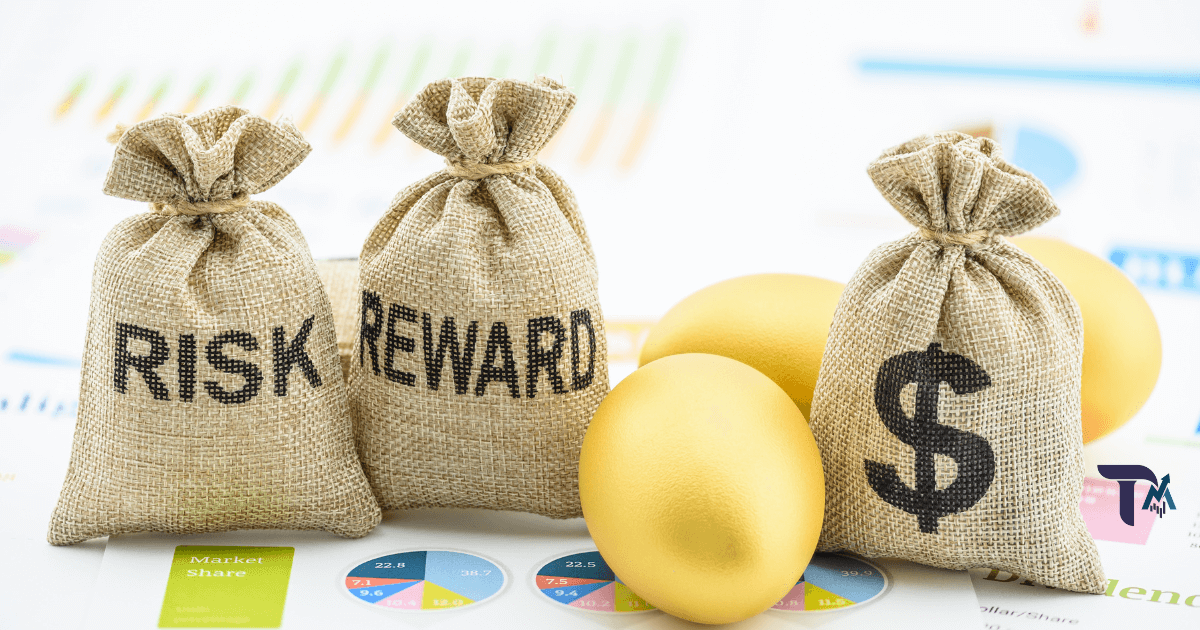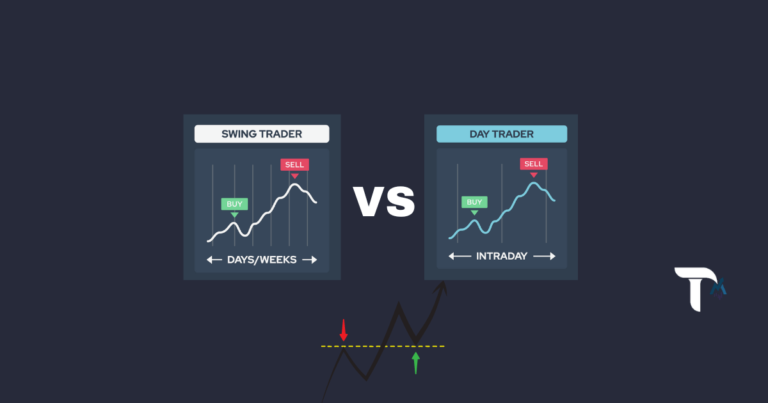What is the risk to reward ratio formula? How to Calculate It
The risk to reward ratio formula is a mathematical way of determining the amount of risk versus reward in a given situation. To calculate it, divide the potential loss by the potential gain. The higher the risk-to-reward ratio, the riskier the situation.
The risk-to-reward ratio is a way for investors to decide if a potential investment is worth the risk. To calculate the risk-to-reward percentage, divide the possible return by the amount of risk. For example, if an investor has a potential return of 10 and is taking on a 5 risk, their risk-to-reward ratio would be 2. That means that the investor could make two units of return for every unit of risk taken.
The greater the potential return relative to the risk, the more attractive an investment may be. However, it is crucial to remember that there is no guarantee that an investment with a high risk-to-reward ratio will offer a high return. You should always thoroughly examine all risks before making any investment decisions.
- Calculation Simplicity: It’s calculated by dividing the potential risk (difference between the entry point and stop-loss) by the potential reward (difference between the entry point and take-profit target).
- Guidance for Decision Making: A favourable risk-to-reward ratio (e.g., 1:3) means that the potential reward is three times the potential risk, guiding traders to more lucrative opportunities.
- Vital for Money Management: It helps traders and investors set stop-loss and take-profit levels, essential for preserving capital and taking profits at predefined levels.
- No Guarantee of Success: A favourable ratio doesn’t guarantee a successful trade; it simply indicates a trade has a good potential return relative to the risk taken.
- Used Across Various Markets: Whether you’re in stocks, forex, commodities, or any other market, the formula is universally applicable.
- Objective Analysis: Helps in removing emotion from trading decisions, ensuring choices are based on logical potential outcomes.
- Enhances Long-Term Viability: By consistently adhering to a favourable risk-to-reward ratio, traders can endure a series of losses but still come out ahead with a few successful trades.
- Varies Among Traders: While some traders might be comfortable with a 1:2 ratio, others might look for a 1:3 or even higher. It’s essential to choose a ratio that aligns with one’s trading strategy and risk tolerance.
- Continuous Review: Market conditions change, and so can the potential risk and rewards of trades. It’s crucial for traders to continuously reassess and adjust their ratios in line with evolving market scenarios.
What is risk reward ratio and why it’s important
The risk-to-reward ratio is a financial term used to describe the relationship between the amount of potential risk and the amount of potential reward for a given investment. Typically, the risk-to-reward ratio is expressed as a ratio in which the risk is the numerator, and the reward is the denominator.
The risk-to-reward ratio is important because it can help you assess whether an investment is likely profitable. A high risk-to-reward ratio means a higher profit potential and a higher potential for loss. A low risk-to-reward ratio means a lower profit potential and a lower potential for loss.
When making investment decisions about stocks or other securities, you often weigh the potential risks against the potential gain.
What is a good risk to reward ratio formula?
A good risk-to-reward ratio is a critical element in successful trading. It refers to the amount of potential profit relative to the risk involved in a trade.
For example, if you have a 1:3 risk-to-reward ratio, it means that for every $1 you are willing to risk, you expect to make $3.
To manage your overall risk exposure, you must do this. Always aiming for a higher risk-to-reward ratio can minimize your losses while allowing you to make substantial profits.
Of course, no trade is ever without risk, and there is no perfect risk-to-reward ratio. But by keeping this concept in mind, you can make more informed decisions about which trades are worth taking and which are not.
What Is a 3 to 1 risk/reward ratio?
A 3 to 1 risk-reward ratio measures the potential profit for every dollar of risk in a trade. For example, if you enter a trade with a stop loss of $100 and a target profit of $300, the risk-reward ratio is 3 to 1.
This ratio manages risk and determines whether a trade is worth taking. If the potential profit is less than three times the amount of risk, then the trade may not be worth taking. However, if the potential profit is more than three times the risk, the trade may be worth taking.
The 3 to 1 risk-reward ratio is just one tool traders use to make trading decisions. Other factors, such as technical analysis and market sentiment, should also be considered before entering any trade.
How can you use the risk-to-reward ratio in trading?

The risk-to-reward ratio is a simple way to compare the potential profits of a trade with the amount of risk you are taking. By dividing the potential profit by the possible loss, you can see how much you stand to gain or lose.
For example, if you buy a stock for $100 and your stop loss is at $98, your risk is $2 per share. If your target price is $105, your potential reward is $5 per share. Therefore, your risk-to-reward ratio would be 2:5 or 1:2.5.
This ratio can be used to help you make decisions about which trades to take and how to manage your risks. If a trade has a high risk-to-reward ratio, it may be worth taking on more risk to achieve greater rewards.
To make smarter trading decisions? Use our cutting-edge Risk to Reward Calculator! By inputting a few key figures, you’ll instantly see the balance between potential gains and losses, empowering you to approach the market with confidence and clarity.
Finding a profitable trading strategy

It’s no secret that finding a profitable strategy can be challenging. After all, the market is constantly changing and evolving, so what worked last year might not work this year. But you can do a few things to increase your chances of finding a winning strategy.
- First, focus on a specific market or markets that you understand well. By doing this, you will quickly identify potential opportunities and trends.
- Second, don’t be afraid to test out new ideas and strategies. You never know which one might be the winner you’re looking for.
- Finally, keep a close eye on your results and track your progress over time. This way, you can identify any issues with your strategy and adjust it as needed.
By following these tips, you’ll be in a much better position to find a profitable strategy for trading that works for you.
the best risk reward ratio for day trading
There are a few things to consider when looking for the best risk-reward ratio for day trading.
- The first is the amount of capital you have to work with. The more capital you have, the higher the potential return and the lower the risk.
- Second, you need to consider your risk tolerance. Some people are more comfortable with higher risks and potential rewards, while others prefer a more conservative approach.
- Third, you need to consider the time frame you’re working with. A higher risk-reward ratio may be more appropriate if you’re only planning on holding onto a position for a short period.
- However, a lower risk-reward ratio may be ideal if you’re looking to hold a position for longer-term growth.
How to use risk reward ratio in day trading
Risk and reward are two critical factors to consider when day trading. The risk-reward ratio is the amount of potential profit compared to the amount of risk involved in a trade. For example, if you have a target profit of $100 and are willing to risk $50, then the risk-reward ratio is 2:1.
There is no perfect risk-reward ratio, and what works for you may not work for others. Finding a balance that suits your trading style and risk tolerance is essential.
Here are some things to keep in mind when using the risk-reward ratio in day trading.
- Consider the overall market conditions before entering a trade. If the market is volatile you may want to take on less risk.
- Set realistic targets, If you set a too high target, you will not be able to achieve it.
- Use the risk-reward ratio in conjunction with other signals.
Limiting Risk and Stop Losses
When it comes to trading, there are several risk management techniques that you can use to limit exposure to the markets. One of these is known as stop losses.
A stop loss is an order placed with a broker to sell a security when it reaches a specific price. The purpose of this is to limit your losses on a position.
There are several ways to place stop losses, each with its advantages and disadvantages. The most important thing is to make sure that the stop loss is placed in such a way that it will limit your losses.
Most traders mistake placing their stop loss too close to the current market price. As a result, they may be stopped out of their position prematurely before they have had a chance to profit from it.
Conclusion
In conclusion, the risk to reward ratio formula is a simple and effective tool for managing risk and maximizing rewards in trading and investment. By understanding how to calculate it and using it in your decision-making process, you can improve your chances of market success.







